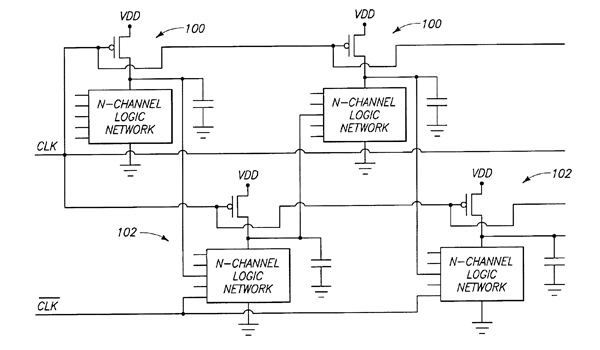Difference between static character and dynamic character in nMOS
• Categorized under Physics | Difference between static character and dynamic character in nMOS
Those of you who know their physics well will have an idea of what this article is all about. For those who do not, let’s keep it simple that we will discuss circuits and the power dissipation that takes place in circuits. When we use the abbreviation nMOS, which is short for N-type metal oxide semiconductor, we refer to the logic that uses MOSFETs, that is, n-type metal-oxide semiconductor field effective transistors. This is done in order to implement a number of various digital circuits such as logic gates.
To begin with, nMOS transistors have 4 modes of operation; the triode, cut-off (also known as sub-threshold), saturation (also called active) and velocity saturation. There is power dissipation in whichever transistor that is used, rather speaking generally, there is power dissipation in whatever circuit that is made and works. This loss of power has a static and a dynamic component and it can be indeed a difficult task to tell them apart in simulations. This is the reason why people may not be able to differentiate them from each other. Hence the development of the terminological distinction of two types of characters, namely static and dynamic. In integrated circuits, nMOS is what we can refer to as a digital logic family, one that uses a single power supply voltage as opposed to older nMOS logic families which required more than one power supply voltages.
To differentiate the two in simple words, we can say that a static character is one that will not undergo an important change at any part and remains essentially the same at the end as it was at the beginning. In contrast to this, a dynamic character refers to the one that will undergo an important change at some point. Note that this definition and differentiation is not specific to static and dynamic characters in nMOS but refers to the general distinction between any static and dynamic character. So putting them in the reference of nMOS, we can make a simple conclusion that static characters in nMOS do not exhibit any changes over the course of the circuit’s life whereas dynamic characters do exhibit some sort of a change over the same course.
NMOS circuits are usually used for high speed switching. These circuits use nMOS transistors as switches. When using a Static NAND Gate, two transistors are applied on their respective gates circuits. Connecting too many input transistors in series is not recommended as it can increase the switching time. In the static NOR Gate, two transistors are connected in parallel. On the other hand, in Dynamic nMOS circuits, the basic method is to store the logic values using the input capacitances of the nMOS transistors. The dynamic system operates in a small dissipation power regime. Moreover, dynamic circuits offer a better density of integration when compared to their static counterparts. However, a dynamic system is not always the best option as it needs more driving commands or more logic unlike a static system.
Summary of differences expressed in points
1. A static character is one that will not undergo an important change at any part and remains essentially the same at the end as it was at the beginning. In contrast to this, a dynamic character refers to the one that will undergo an important change at some point
2. Static characters in nMOS do not exhibit any changes over the course of the circuit’s life whereas dynamic characters do exhibit some sort of a change over the same course
3. When using a Static NAND Gate, two transistors are applied on their respective gates circuits. Connecting too many input transistors in series is not recommended as it can increase the switching time. In the static NOR Gate, two transistors are connected in parallel. On the other hand, in Dynamic nMOS circuits, the basic method is to store the logic values using the input capacitances of the nMOS transistors
4. Dynamic circuits offer a better density of integration whereas the static circuits offer a poorer integration density comparatively
5. Dynamic systems are not always the best option as they need more driving commands or more logic; static systems require lesser logic or input commands
- The difference between Royal icing and Buttercream icing - March 22, 2015
- Difference between stuffed and deep dish pizza - March 21, 2015
- Difference between Crane and Heron - March 20, 2015
Sharing is caring!
Search DifferenceBetween.net :
Cite
APA 7
Ali, A. (2014, October 28). Difference between static character and dynamic character in nMOS. Difference Between Similar Terms and Objects. https://www.differencebetween.net/science/physics-science/difference-between-static-character-and-dynamic-character-in-nmos/.
MLA 8
Ali, Allana. "Difference between static character and dynamic character in nMOS." Difference Between Similar Terms and Objects, 28 October, 2014, https://www.differencebetween.net/science/physics-science/difference-between-static-character-and-dynamic-character-in-nmos/.
Leave a Response
Written by : allana. and updated on 2014, October 28
See more about : circuits, n-type metal-oxide, nMOS

